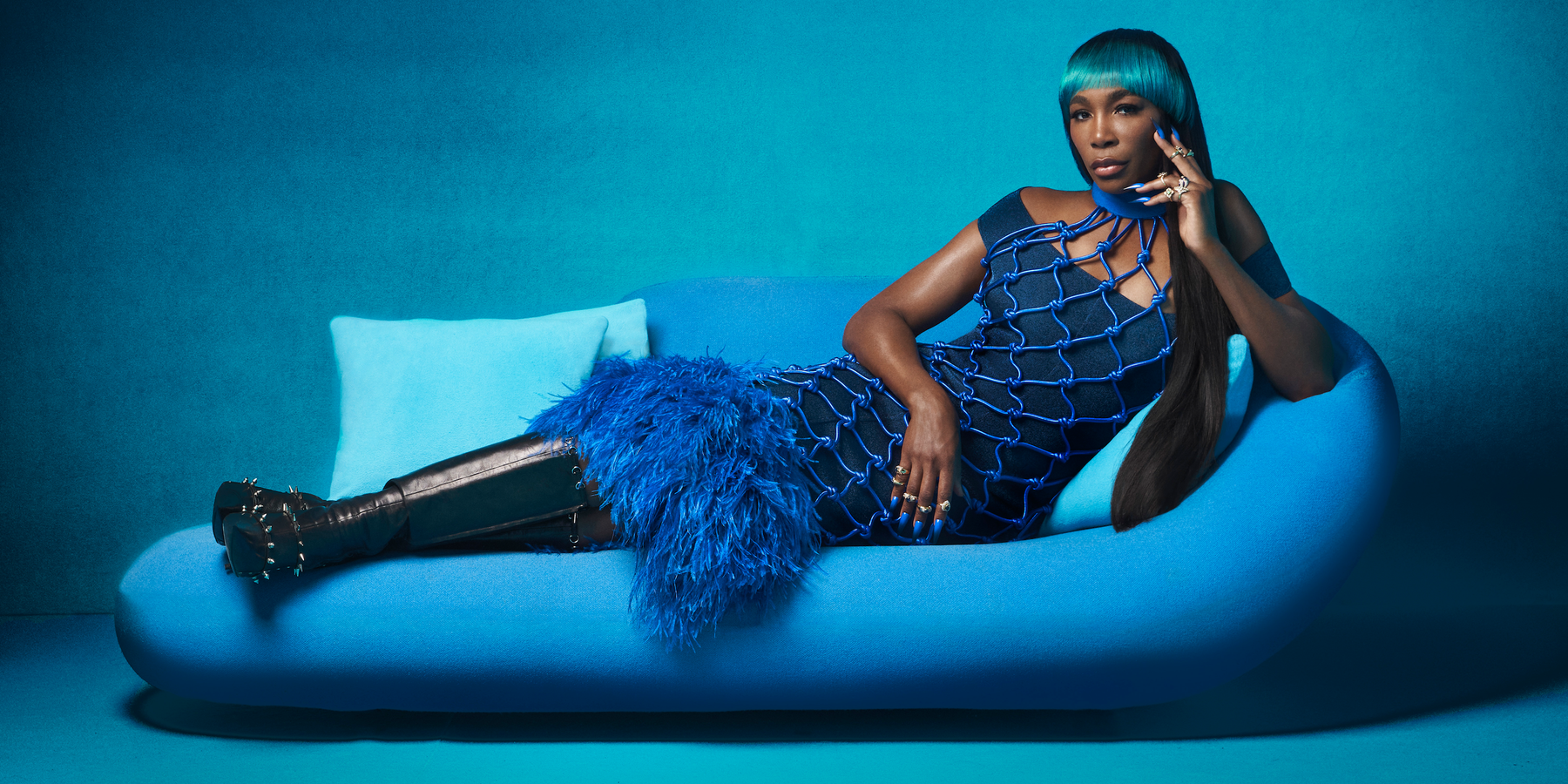
Venus Williams Wants You to Remember Nina Simone Forever
Story by Emann Odufu / Photography by Kenny Germé / Styling by Kevin Lanoy / Hair by Ro Morgan / Makeup by Karina Milan / Set design by Felix Gesnouin / Nails by Julie VeyronMay 09, 2023

Singer and activist Nina Simone radiated electric energy when she performed — the type that can only be generated when you go all in for your creative pursuit. In the lexicon of the times, she was 10 toes down for the culture. Her music was more than a portal to her own transcendent but at times tortured soul; it was also a portal to the souls of Black folk in the US and across the globe. Beyond the power and intensity of songs like “Mississippi Goddam,” Simone’s social practice reached into the astral plane, and became the voice of generations past, present and future.
Today, tennis superstar Venus Williams and fine artist Adam Pendleton are co-curating an auction to raise money for the restoration of Simone’s childhood home in Tryon, North Carolina. Joined by a crew of artists including Cecily Brown, Julie Mehretu, Rashid Johnson and Ellen Gallagher, to name a few, this collective act of generosity is the first restoration of this size and will create a monumental space dedicated to the preservation and proliferation of Simone’s legacy.
In a time when society had very specific roles for women, but especially Black women, Simone dared to be different and leave her family nest to play what they considered “devil’s music” in cabarets around New York, Philadelphia and Atlantic City. Initially a trained pianist, her work is built upon the pantheon of Black classical music, with an infusion of pop, gospel, jazz and folk — the source that has affected so many aspects of popular culture and by proxy the modern human experience as we know it.
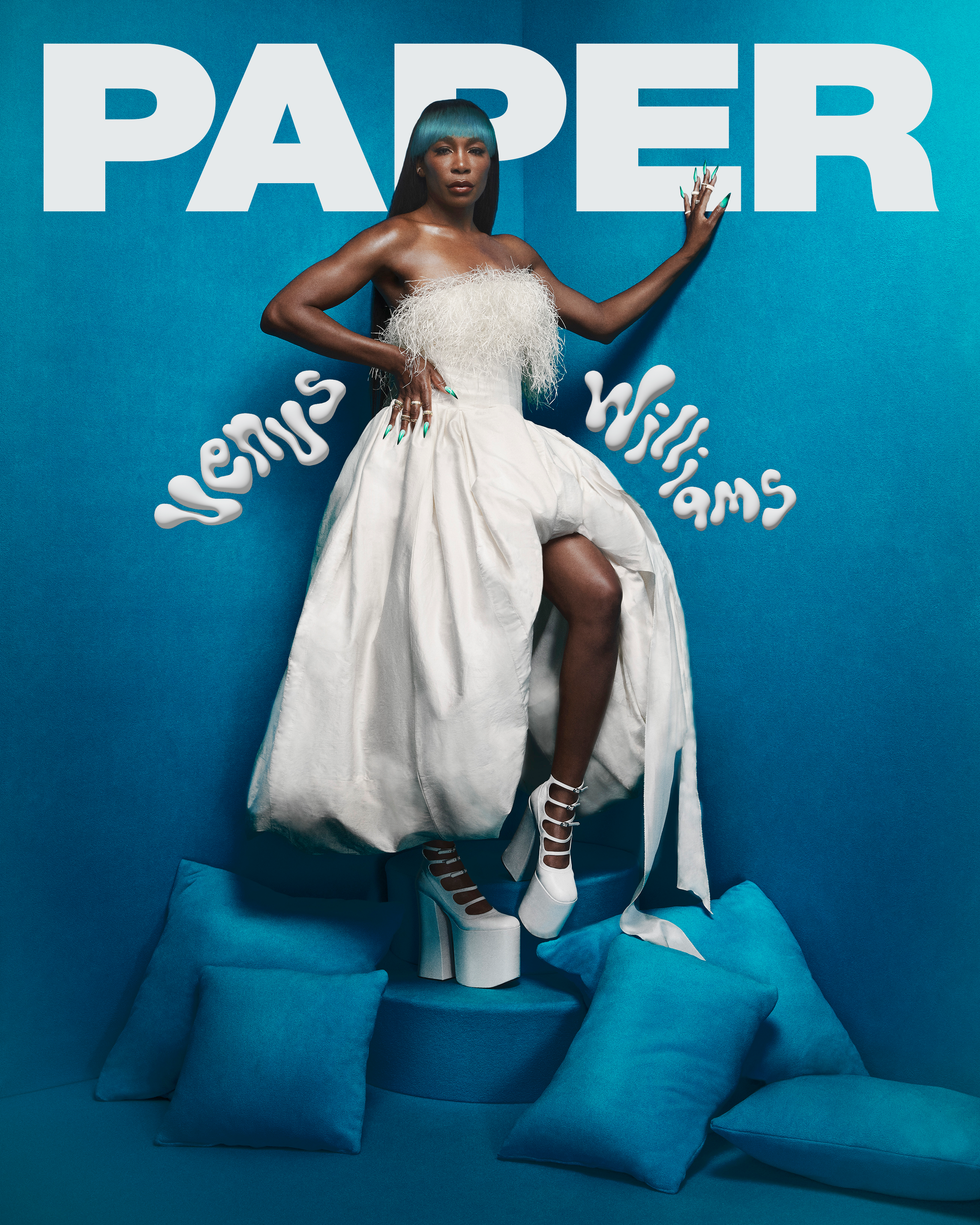
Skirt (worn as a top): Jacquemus, Skirt: De Pino, Rings: Copin, Shoes: Marc Jacobs
As a result, Simone’s influence cannot solely be looked at as mere entertainment. Once she reached success, Simone dared to champion desegregation and Black liberation around the world. Her music imbued a spirit of rebellion, becoming a weapon to unite communities, and share codes, experiences, hope and, most importantly, an unconditional love for her people. She displayed a sense of radical care, so much so that she was willing to sacrifice everything in the pursuit of truth and justice.
Throughout both Williams’ and Pendleton’s careers, Simone has existed as inspiration for what it means to use your platform as a love song to communities dealing with systemic injustices. We exist in a time of information overload, so much so that pivotal stories from our past can start to lose significance, replaced with the next viral TikTok craze. So many of those who helped trailblaze the paths we now walk have transitioned into becoming our ancestors, which is why it’s critical that we help keep their messages alive and part of today’s conversation.
Below, PAPER caught up with Venus Williams and Adam Pendleton in the weeks leading up to the Nina Simone Childhood Home Benefit Auction to discuss their personal connections to Nina Simone’s legacy and mobilizing to preserve the stories we want to see represented in our history.
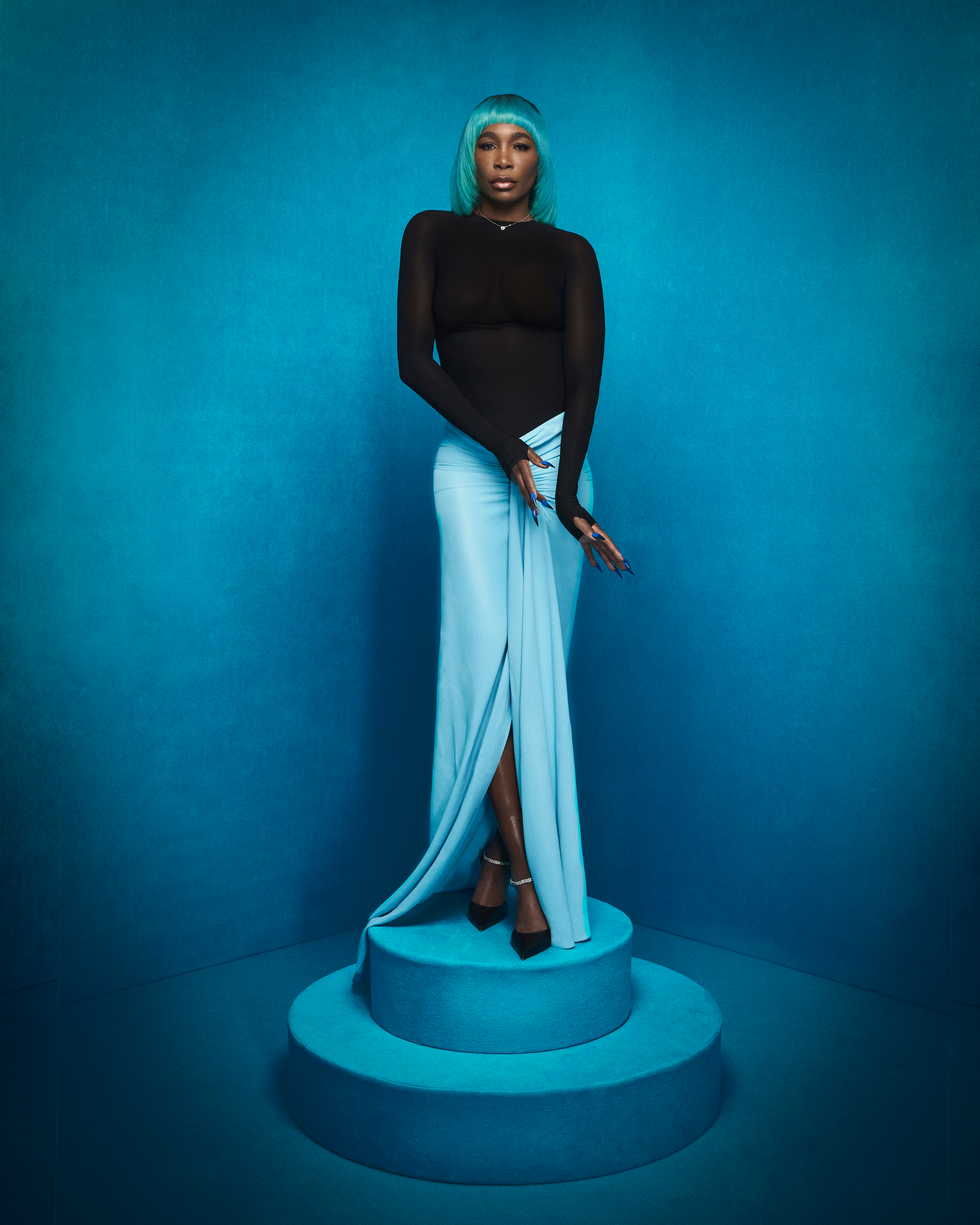
Dress: Alaïa, Shoes: Amina Muaddi, Necklace: Mellerio
You both are making a great effort to preserve the culture. Online they say, “We’re losing recipes,” and this definitely feels like something that will keep those recipes alive for future generations. What about Nina Simone and her legacy made you want to take on such a strong role in championing this restoration project?
Adam Pendleton: For me, it’s quite simple: it was obvious that Nina Simone’s legacy needs to be preserved. The music she made needs to be known and not even necessarily understood, but it needs to be a part of the cultural fabric of this country for decades to come.
Venus Williams: History is so important to me. My mom and dad were so adamant that you must know your history so that you know yourself. Because of that I knew about Nina Simone and her legacy growing up. This moment is so important because her influence persists to this day, and her brilliance lives on and really transcends time and culture. Her legacy really has to be solidified, and made permanent and everlasting. Also, she deserves a site with those same qualities. There isn’t enough preservation of the legacies of people with brown skin, so this is very exciting to be a part of.
I’m interested in the idea of art as a social impact tool and the role of visual artists in the “art activism” realm. Does this project fall in the category of that?
Adam: It's not that it's art as activism, it's not even necessarily activism. It's really just a gesture of generosity by a group of people. It’s a collective act and when I think about the ripple effect of what one gesture can do or become and how it can bring different people together from disparate places to create a new kind of voice, a unified voice emerges. So this tension between the individual act and the collective act, and how one influences and transforms and becomes the other is very interesting to me. We are now all doing this together, we are now all bringing attention and hopefulness a sense of possibility. It’s important that sites like Nina’s and other sites by important African Americans will be acknowledged prominently in the complex story that is America.
What is the role of the African American Cultural Heritage Action Fund in this restoration process?
Adam: The National Trust for Historic Preservation, that's the big organization and then they have specific programs or initiatives within the organization. One of them is the African American Cultural Heritage Action Fund, which is led by Brent Leggs. That specific program preserves historic sites that are an important part of the African American story.
Venus, how did you become affiliated with the restoration?
Venus: I met Adam not that long ago and had the opportunity to interview him. I did so much research for this interview and it was outside of my ballpark because I'm usually on the other end. I have so much respect for him, I wanted to get it all right. So that was how we started. It's such an honor to be a part of this because I truly love art. It makes me so happy to be able to preserve Nina’s legacy. I’m so excited that the African American Cultural Heritage Fund is working with us on what is going to be the largest ever preservation effort for an African American historic site. While that's exciting, it's also shocking that it's taken this long for this to happen. I'm so glad that Adam believed that I could bring value to this and not only bring awareness to it, but also to be a part of the curation of it.
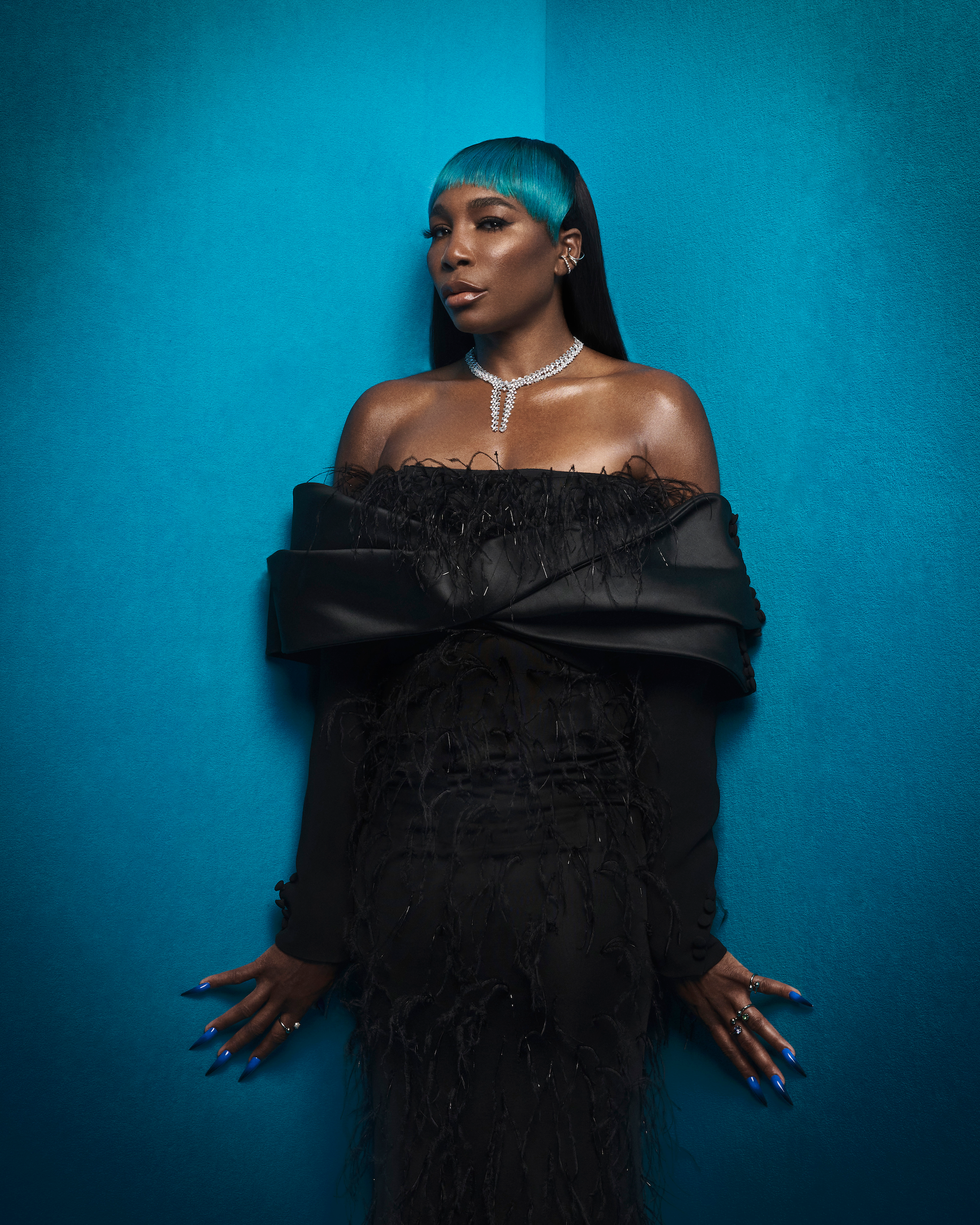
Jacket: Azzi and Osta, Dress: Givenchy, Ear cuffs and rings: Justine Clenquet, Necklace: Cartier
Who are some of the artists being auctioned at the gala?
Venus: Ellen Gallagher, Rashid Johnson, Julie Mehretu... It's exciting that so many monumental artists who will go down in history and are already creating works and ideas that are quite groundbreaking are contributing to the cause.
Adam: Yes, I’m sitting here so struck by what an all-star event this Nina Simone benefit has become with Venus involved and all the artists that Venus just named are some of our greatest living artists, undoubtedly. Cecily Brown... It's really incredible all these acts of generosity. These people are donating individual, unique works. You can't replicate it, you can't do it again. I know how hard it is for me as an artist to sell my work to collectors. People think it's rather easy, but it's actually very hard to do because I love the things I make so much. It's like someone's ripping something away, so I know how much it means for an artist to give that kind of generosity.
I’m interested in how various creative realms influence and affect each other. Nina Simone, being a musician, obviously had a great impact on both your lives. Is there any way you’ve carried the spirit or artistry of Nina Simone into your own crafts and disciplines? To me, sports is also a form of performance art; I come from the everything can be art methodology.
Venus: There would be no me without women like Nina. She broke so many barriers; she opened so many doors and sacrificed so much. There were so many other artists at that time who weren't willing to make those sacrifices. You could tell that the truth meant a lot to her, so much so that she was willing to sacrifice her position in the world and her success for what really mattered. I literally am doing what I do because of her and because of people like her. Her greatest impact for me is opportunity equality. In my head at times I'll think of tennis as an art form as things can be performing arts, but I don't know that I'm a real artist. I really do appreciate being able to interface with the creative world through art, music and performances.
Adam: One of the things that makes Nina so unique and is something we should all strive for and don’t do enough as a society or as individuals is the willingness to sacrifice what is recognized as success in order to stand up for what is right. All too often we let that responsibility fall to someone else. That wasn't the attitude Nina had during the Civil Rights Movement, specifically. She wasn't saying, “Oh, someone else will sing about it.” She said, “I will do it. I will bring attention to it. I will vocalize it. I will be a symbol. I will be a gesture. I will be a conduit for people that are underrepresented, misrepresented, excluded.”
Fast forward to this moment, it's probably hard for us to sit here and understand how much it takes for someone to really take a stand. It was not popular. It was not chic. It was not fashionable. It was authentic. I'm not saying that Nina was a hero because I don't think you have to be a hero to do what is right. She had a complicated life. She had a complicated relationship with her daughter, for example. Regardless of all of that, when push came to shove, she stood for what is right and you don't have to be a hero to do that, but it is heroic. I hope this kind of gesture, by bringing attention to someone like Nina, will encourage someone in moments both big and small to stand for what is right because they have a template. They have someone to look towards.
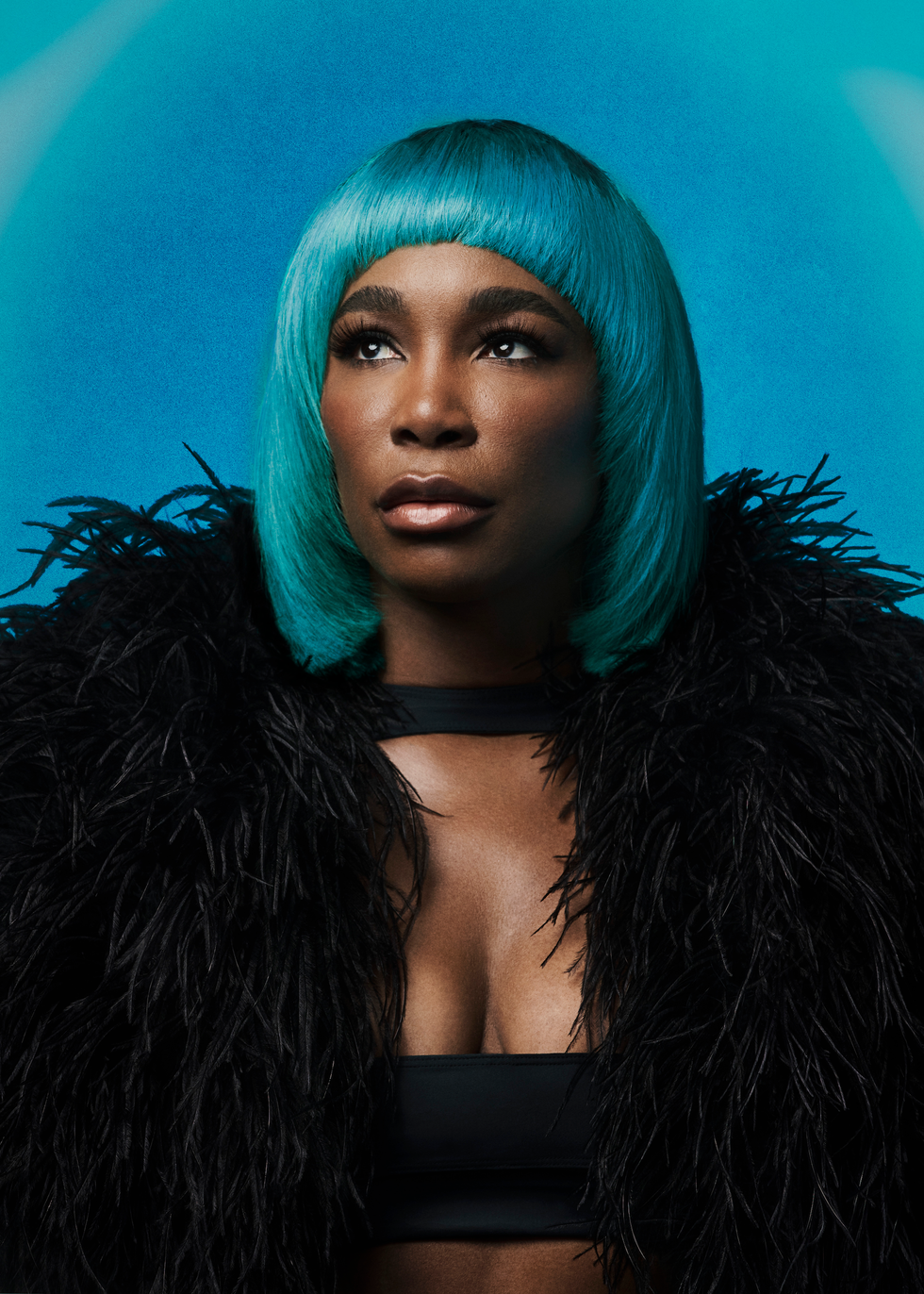
Bodysuit: Mugler, Jacket: Ambush
Venus, in addition to maintaining a rigorous training schedule, over the years you have also ventured deeper into art and design with the launching of your design company V Starr in 2002. Tell us about developing your background in art and design, and how that translated into your passion for fine art?
Venus: If I hadn't been an athlete, I would have landed in the arts somehow. It's hard to say what would have happened, but that's how it feels in my heart. I went to lots of art schools. I went to fashion school. I went to interior design school. I was always in school. In terms of getting involved with the fine art world, I had a lawyer who unfortunately passed, and he was a friend of our family for so long and I asked him how to get involved. His sons are great artists and they started showing me around. I went through a process of diving in. I'm still learning today, but I love being around it. Eventually, I came across Adam’s work and really loved it. I have so many art books in my house and have to transfer them to my office because I need more space to hold them.
What types of projects are you working on for clients at V Starr?
Venus: There's so much that goes into interior design. It really starts to be the psychology of understanding where you are in your space, where you are in the world and how it is appropriate for your design. I love that it's always changing and that's much like what I do on the court. Every point’s different, it's never the same. Maybe we had an ace or something, but other than that it's always changing and it's exciting to be a part of that change. The kind of projects we work on are mostly hospitality and commercial projects, so we do a lot of work that impacts a lot of people as they pass through space and that means a lot to us. We just turned 20, so it was a really big milestone for the team.
Adam, I really love your work. I bought your book, Who Is Queen?, a couple months ago and have been in awe of your practice and the fact that you’ve accomplished quite a bit under 40. You also just had your first comprehensive solo show in Vienna, Blackness White and Light. What was it like bringing this monumental show to life?
Adam: Making art is a lot of work. I work a minimum of 12 hours a day and that includes actually making the art, but there's all these other things that one has to attend to run a studio and show work all over the world. The show in Vienna is my first comprehensive show in Europe. I've had other shows of that nature in the States, but it's always interesting to bring your ideas to different places and see how people respond to what you're doing. Even more than that, after you've worked on something for so long, to see it actually realized transforms and influences and informs everything you do after that. So I have to admit I left the show at Mumok feeling very inspired. Everyone said, “You're gonna take a vacation now,” and I actually just wanted to get back into the studio.

Bodysuit: Mugler, Skirt: Tim Ruehl, Shoes: Amina Muaddi, Rings: Cartier, Tights: Falke
Your practice is grounded in a term you created, called “Black Dada.” Can you explain this and how it’s a guiding theory throughout your art?
Adam: It was a way for me to create space for myself as an artist. As the years have gone on, I've realized that it was not just about creating space for myself, but it was about also creating space for others. To echo Nina Simone and what Venus was saying earlier, we can create space and possibilities for each other through the acts and gestures that we make and the ideas that we put into the world. Black Dada is about creating a capacious space where ideas about art culture, but even more specifically about abstraction and representation and the avant-garde, can exist in relationship to each other in all their complexity. I'm not about making things simple, I'm about acknowledging the complexities that exist within all of us and in the world in which we all move through.
Venus, last year you were honored by the Portrait of a Nation Gala and sat down for a portrait by Robert Pruitt. The piece integrated personal homages, hidden messages and symbolism about your family, career, fight for equal pay and more. What was it like sitting for him?
Venus: I was blown away. It's not an easy journey to find an artist that you think can really portray who you are and so that was important to me. I imagine it would be the same for anyone who might be nominated for this honor. When I met Robert, I thought, This is the guy. We were into the same thing, so he understood me. I'm also not that serious of a person. I’m always laughing, joking, dancing and singing, so I wanted my portrait to have some of that. At the end, it became another thing because we realized it was about my journey in life, but also how that journey wasn't just me. The first thing that occurred to me was, I didn't get here alone. Because of so many people, I got to have this honor so we should share it.
What I loved about Robert was his use of symbolism and how powerful it was. We used his technique to create those symbols within the art to represent my family and represent those who paved the way. So it was a great experience to have that opportunity to work with someone of such tremendous talent. After that, I said I peaked in the art world; I could never go any higher, but now with this project we have. This is a proud moment.
What are both of your hopes for Nina’s home after it’s completely restored? How do you envision it impacting the local and global community, and preserving her legacy?
Venus: My hope is that her legacy will influence the next generations to come. It’s so important for people to know about her. This restoration gives that opportunity and creates pathways to share insights, not only into her life, but also the realities of African American people growing up in this time. Primarily it’s just about honoring her and we have to do that. I hope it inspires communities and people to continue to trailblaze the path.
Adam: If culture is not preserved, it's erased; it doesn't exist anymore. You might have a memory of it, but what about the generations to come? How are they going to have a memory of something that they never saw or witnessed? While in some ways one could say you are clinging to the past, sometimes you have to bring attention to the past so that you can have the possibility of imagining the future. The future that we don’t need is in 30, 40 or 50 years someone not knowing who Nina Simone is. That idea is terrifying to me. It's like someone not knowing that there was a Civil Rights Movement. It’s quite terrifying, not just in an American context, but really in a global context. When you have a physical site, it's a way to continue to bring attention to things that matter. It's important to know that people exist and know their stories because it allows you to write your own.
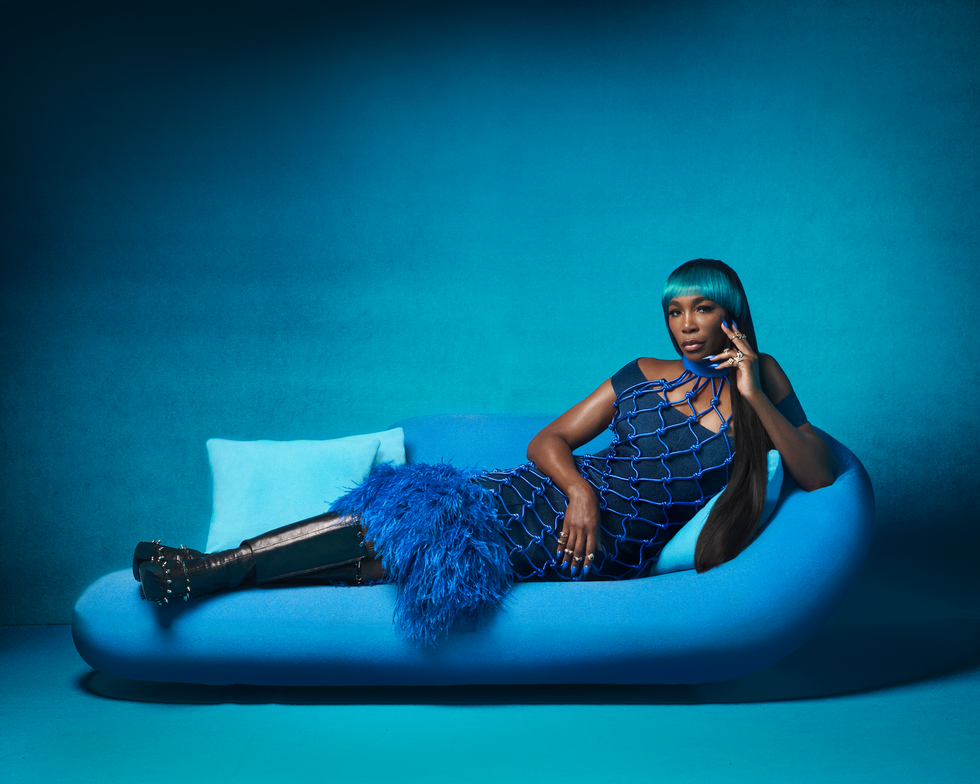
Dress (top): David Koma, Dress (bottom): Alaïa, Rings: Copin, Shoes: Abra
The Nina Simone Childhood Home Benefit Auction features 11 contemporary artworks from Pace Gallery and will benefit the Nina Simone Childhood Home Preservation Project launched by the African American Cultural Heritage Action Fund, a program of the National Trust for Historic Preservation. Hosted by Pace Gallery at their New York flagship space, the benefit gala is co-organized with Sotheby's and will take place on Saturday, May 20.
Throughout May, PAPER will roll out our final projects under the most recent editorial team. These pieces continue pushing forward our mission to provide a platform for fresh talent and important stories too often overlooked. From the subjects to the creatives behind the images, our hope is for you to discover new things and be inspired by what you see. As always, thank you for showing up and being part of our community. –Justin Moran, Editor-in-Chief
Photography: Kenny Germé
Styling:
Kevin Lanoy
Hair:
Ro Morgan
Makeup:
Karina Milan
Set Design:
Felix Gesnouin
Nails:
Julie Veyron
Photo assistant: Nomi Keineg
Second photo assistant: Alexis Parrenin
Third photo assistant: Camille Suils Porte
Styling assistants: Julie Trie and Matis Bobet
Hair assistant: Nathalie Moyassa
Set design assistants: Carole Landriot and Paloma Laratte
PA: Jada Richardson
Executive producer: Chloe Wilk
Producer: Matthieu Perdrizet
Editor-in-chief: Justin Moran
Editorial producer: Alyson Cox
Managing editor: Matt Wille
Graphic designer: Maren Anscheidt